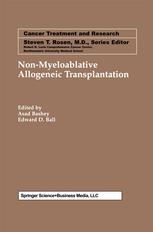

Most ebook files are in PDF format, so you can easily read them using various software such as Foxit Reader or directly on the Google Chrome browser.
Some ebook files are released by publishers in other formats such as .awz, .mobi, .epub, .fb2, etc. You may need to install specific software to read these formats on mobile/PC, such as Calibre.
Please read the tutorial at this link: https://ebookbell.com/faq
We offer FREE conversion to the popular formats you request; however, this may take some time. Therefore, right after payment, please email us, and we will try to provide the service as quickly as possible.
For some exceptional file formats or broken links (if any), please refrain from opening any disputes. Instead, email us first, and we will try to assist within a maximum of 6 hours.
EbookBell Team

4.3
48 reviewsNon-myeloablative allogeneic stem cell transplantation (also known as mini-transplantation or reduced-intensity conditioning transplantation) is a major advance in the field of hematopoietic transplantation within the last 5 years. This approach uses non-cytotoxic or reduced-intensity cytotoxic therapy to prepare patients for allografting of hematopoietic stem cells and lymphocytes. It has the potential to deliver the potent anti-tumor immunotherapy and bone marrow replacement capacity of allogeneic stem cell transplantation to patients with reduced treatment-related morbidity and mortality. It may also enable allogeneic transplantation in patients who would be considered ineligible for conventional transplants because of co-morbidity or advanced age. However, this approach may necessitate more careful monitoring of post-transplant chimerism and malignant disease-status than is usual with conventional allografting. There is also controversy regarding the best preparative regimen and graft-versus-host disease prophylaxis to use.